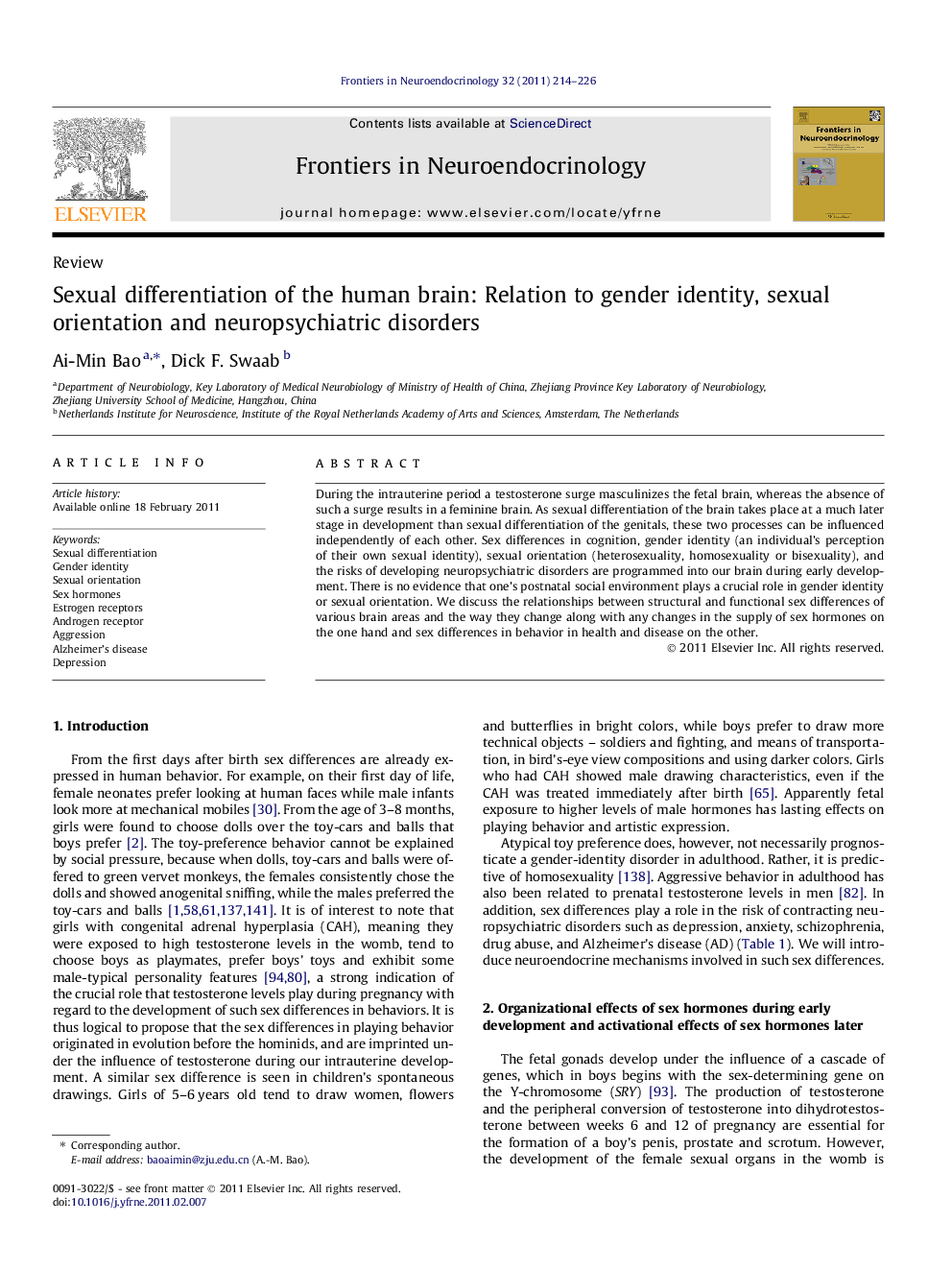| Article ID | Journal | Published Year | Pages | File Type |
|---|---|---|---|---|
| 2799402 | Frontiers in Neuroendocrinology | 2011 | 13 Pages |
During the intrauterine period a testosterone surge masculinizes the fetal brain, whereas the absence of such a surge results in a feminine brain. As sexual differentiation of the brain takes place at a much later stage in development than sexual differentiation of the genitals, these two processes can be influenced independently of each other. Sex differences in cognition, gender identity (an individual’s perception of their own sexual identity), sexual orientation (heterosexuality, homosexuality or bisexuality), and the risks of developing neuropsychiatric disorders are programmed into our brain during early development. There is no evidence that one’s postnatal social environment plays a crucial role in gender identity or sexual orientation. We discuss the relationships between structural and functional sex differences of various brain areas and the way they change along with any changes in the supply of sex hormones on the one hand and sex differences in behavior in health and disease on the other.
Research highlights► Gender identity and sexual orientation are permanently programmed in the fetal brain. ► Testosterone in the fetal stage determines sexual differentiation of the human brain. ► The degree of genital masculinization does not necessarily reflect that of the brain. ► No evidence indicates social environment affect gender identity or sexual orientation. ► Sex differences in the brain determine sex-specific prevalence of brain disorders.
